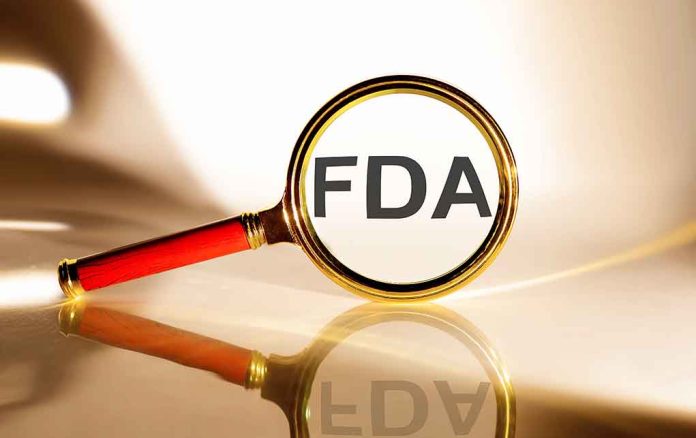
The FDA’s ban on Red No. 3 marks a significant shift, responding to longstanding safety concerns and aligning U.S. standards with stricter international regulations.
At a Glance
- The FDA revokes authorization for Red No. 3, effective January 2027 for food products.
- Red No. 3, linked to cancer in lab animals, found in popular foods like candies and cereals.
- California’s state-level ban preempts FDA’s actions, pushing for safer alternatives.
- Advocacy groups celebrate a victory with the FDA’s decision.
- Parents report behavioral changes in children linked to the dye.
FDA’s Move and Implications
The FDA has announced the revocation of authorization for Red No. 3, setting a compliance deadline from January 15, 2027, for food products, and January 18, 2028, for drugs. The synthetic colorant, utilized widely in gummies, ice creams, and cereals, has faced scrutiny due to its association with cancer in animal studies. The decision is rooted in growing evidence and advocacy from consumer groups pushing for healthier alternatives in the U.S. food supply.
Red No. 3’s usage in an array of everyday foods underscores the impact this ban will have on manufacturers, who must now seek safer alternatives. The move follows extensive petitions reviewed since 2022, highlighting its potential health risks. Recent legislation in California preceded the FDA’s decision, with a state-level ban enforcing the change and urging companies to align with the available alternatives already utilized in Europe and other regions.
FDA bans red dye No. 3 from foods https://t.co/1vEQvrPjdD pic.twitter.com/3fh1Z9z8Xs
— Eyewitness News (@ABC7NY) January 15, 2025
Consumer Advocacy and Health Concerns
Consumer advocacy groups and some lawmakers in the U.S. have long pressed for the dye’s prohibition, culminating in this long-awaited decision. The FDA’s citation of studies noting high levels of Red No. 3 causing cancer in lab rats, although human exposure is considerably less, played a pivotal role in their decision. Alongside cancer concerns, behavioral changes such as hyperactivity and agitation in children reinforce the justifications for the ban, with some parents actively avoiding products with the dye.
“This bill will not ban any foods or products — it will require food companies to make minor modifications to their recipes and switch to safer alternative ingredients that they already use in Europe and so many other places around the globe.” – Assemblymember Jesse Gabriel Source
The National Confectioners Association highlights the expectation for an FDA regulatory framework that is consistent and science-backed: “Our consumers and everyone in the food industry want and expect a strong FDA, and a consistent, science-based national regulatory framework.” This perspective embodies the broader industry sentiment towards the overarching need for clear and reliable safety standards.
Future Outlook and Alternatives
As the transition period progresses, companies are urged to explore natural alternatives such as beet extract. Experts like Jamie Alan and Dr. Daniel Ganjian support these steps as beneficial for public health. Meanwhile, international precedents show viable paths forward: regions like the European Union, Japan, and Australia have already set limits or outright bans on the dye. This move towards elimination aligns the FDA with a global shift towards safer food additives.
“At long last, the FDA is ending the regulatory paradox of Red 3 being illegal for use in lipstick, but perfectly legal to feed to children in the form of candy” – Dr. Peter Lurie Source
This decision, aligning health safety policies with global standards, marks a notable victory for consumer safety advocates. With comprehensive reforms underway, the food industry must now focus on providing safer alternatives to ensure consumer protection without sacrificing product quality and profitability.






















